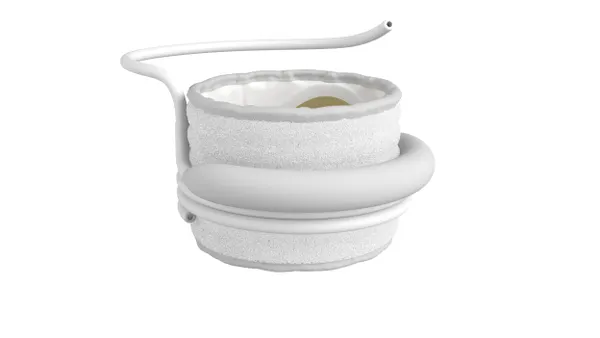Dive Brief:
-
Butterfly Network has raised $250 million to commercialize its $2,000 handheld full-body ultrasound device.
-
The financing, which reportedly values Butterfly at $1.25 billion, comes nine 11 months after the FDA granted 510(k) clearance to the ultrasound-on-a-chip device, iQ.
-
Butterfly thinks the device will replace large, cart-based ultrasound devices that cost tens of thousands of dollars and thereby upend a sector currently dominated by companies such as GE Healthcare, Philips and Fujifilm.
Dive Insight:
The core technology underlying ultrasound imaging has remained the same during the 60-plus years it has been used in clinical applications. From the 1950s onward, physicians have looked inside their patients with machines that use crystals to generate and collect sound waves. Over time, the images generated by these machines have improved and the technology has been shrunk down so it can be wheeled to patients. The devices remain crystal based, expensive and, in most cases, large, though.
Jonathan Rothberg, the founder of next-generation sequencing pioneer 454 Life Sciences, wondered if the equipment had to be that way. That thinking led Rothberg to MIT physicist Max Tegmark and his student Nevada Sanchez. Together, they started Butterfly to explore the use of silicon chips, not piezoelectric crystals, to generate ultrasound images.
Seven years later, Butterfly has a commercial device that fits with Rothberg’s original vision and $250 million to start growing its business. The device, iQ, weighs 11 ounces, attaches to smartphones to display images at the point of care and scans all parts of the body. Conventional ultrasound devices require different attachments to look inside different parts of the body. Butterfly is selling iQ for around one-tenth of the price of conventional, low-end ultrasound machines.
That proposition has proven to be attractive to some well-known investors. Fidelity Management and Research led the round with the support of the Bill & Melinda Gates Foundation, Fosun Pharma and York Capital Management founder Jamie Dinan. The involvement of the Gates Foundation suggests the potential for the relatively-affordable device to expand access to ultrasound imaging in low and middle income countries.
Butterfly will need to expand access to ultrasound imaging in these countries and the west if it is to live up to the expectations of investors who have valued it at $1.25 billion. Market research group Stratistics MRC valued the global ultrasound market at $7.8 billion in 2017. If Butterfly gets physicians to replace their conventional machines with iQ, the market could contract significantly as its device costs one-tenth of equipment from incumbents such as GE and Philips.
Butterfly will make some money from the monthly service fee it charges users but it may still need to increase the total number of ultrasound devices in use globally to justify its valuation. Work toward that goal is underway. Butterfly has begun shipping iQ and expects to have thousands of units in the field in the U.S. by the end of the year, Forbes reports. Beyond that, Butterfly is planning to introduce its device in Europe next year and target China and the rest of Asia around 2020.










